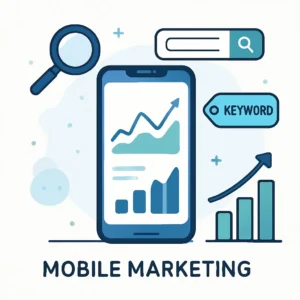

Conversational Marketing
Conversational marketing has emerged as a transformative approach to engaging customers in real-time, personalized conversations that foster trust, enhance user experience, and drive conversions. With the increasing adoption of artificial intelligence (AI) and automation tools, businesses are revolutionizing how they communicate with their audience, seamlessly integrating conversational techniques into their marketing strategies.
conversational marketing, its benefits, strategies, and how it enhances engagement. We will also dive into related concepts like AI-driven marketing, sales funnel automation, and personalized customer journeys.
Table of Contents
ToggleWhat is Conversational Marketing?
Conversational marketing is a customer-centric approach that uses real-time, one-on-one interactions to nurture leads, answer questions, and guide potential buyers through their journey. It involves using tools like live chat, chatbots, and AI-driven messaging platforms to establish meaningful conversations with customers.
Unlike traditional marketing, which often relies on broad, impersonal communication, conversational marketing focuses on creating personalized experiences. It’s a shift from pushing information at customers to actively engaging them in dialogue, often leveraging channels like:
- Live chat software
- Social media messaging apps
- AI-driven chatbots
- Voice assistants
This approach ensures faster response times, higher engagement rates, and more tailored customer support, leading to better conversion rates.
Benefits of Conversational Marketing
Conversational marketing offers numerous benefits for businesses aiming to enhance their customer relationships and streamline their marketing processes:
Real-Time Engagement
Instantaneous communication helps address customer queries immediately, keeping potential buyers engaged and reducing drop-offs.Personalized Interactions
AI-powered tools analyze user behavior and preferences to offer highly relevant suggestions, fostering trust and loyalty.Improved Conversion Rates
By addressing concerns in real time and guiding customers through their journey, businesses can significantly boost conversions.Enhanced Customer Experience
Providing a seamless and intuitive way for users to interact with your brand creates a positive impression and builds long-term relationships.Cost-Effectiveness
Automated tools like chatbots reduce the need for large customer service teams, cutting operational costs without compromising service quality.
Conversational Marketing Strategies
To implement conversational marketing effectively, businesses need a robust strategy that aligns with their goals and customer needs. Here are some key strategies to consider:
1. AI-Driven Marketing
AI-driven marketing involves leveraging artificial intelligence to optimize and automate conversations. AI-powered chatbots, for instance, can handle customer inquiries, recommend products, and even upsell based on user preferences. These tools continuously learn from interactions, improving their accuracy and relevance over time.
2. Sales Funnel Automation
Integrating conversational marketing into your sales funnel helps automate lead nurturing and follow-ups. Automated workflows can guide potential customers through each stage of the funnel, from awareness to decision-making, ensuring no leads fall through the cracks.
3. Personalized Customer Journeys
Personalization is the cornerstone of conversational marketing. Use data analytics to understand your customers’ preferences and craft tailored experiences. For example, a chatbot could recommend products based on past purchases or browsing history.
4. Omni-Channel Presence
Ensure your conversational marketing strategy spans multiple platforms, including your website, social media, and messaging apps. This ensures customers can interact with your brand wherever they prefer.
5. Feedback Loops
Use conversational tools to collect customer feedback and insights. This not only helps improve your products and services but also demonstrates that you value customer opinions.
How Conversational Marketing Improves Engagement
Real-Time Responses
Customers today expect instant responses. Conversational marketing tools like live chat and chatbots provide immediate assistance, keeping users engaged and preventing them from seeking alternatives.
Two-Way Communication
Unlike traditional marketing, which is often one-sided, conversational marketing fosters a dialogue. Customers feel heard and valued, which strengthens their connection to your brand.
Interactive Experiences
Interactive features like quizzes, personalized recommendations, and guided product tours make the user experience more engaging and memorable.
Reduced Friction
By addressing concerns or answering questions on the spot, conversational marketing removes barriers to purchase, simplifying the decision-making process.
Best Tools for Conversational Marketing Strategies
HubSpot Live Chat
A comprehensive tool that integrates seamlessly with CRM systems, offering personalized interactions based on user history.Drift
Known for its conversational AI capabilities, Drift helps businesses automate customer engagement while maintaining a human touch.Intercom
A versatile platform offering chatbots, live chat, and messaging solutions to enhance customer experience.Zendesk Chat
Ideal for customer support-focused businesses, Zendesk Chat integrates with other tools for a unified approach.Tidio
A cost-effective solution for small businesses, Tidio provides chatbots and live chat features that are easy to use.
Automated Sales Conversations
Automated sales conversations leverage AI and machine learning to engage leads, qualify them, and move them closer to purchase. These automated systems can handle repetitive tasks like:
- Greeting visitors
- Answering FAQs
- Scheduling appointments
- Providing product recommendations
Automation ensures a consistent and efficient experience for customers, freeing up human agents to focus on more complex inquiries.
Examples of Conversational Marketing in Action
E-Commerce: An online clothing retailer uses a chatbot to recommend outfits based on a customer’s preferences and past purchases, leading to higher upsell rates.
B2B SaaS: A software company integrates live chat on its website to answer technical questions from potential clients, accelerating the sales cycle.
Hospitality: A hotel chain uses messaging apps to handle booking inquiries, send reminders, and upsell room upgrades or services.
Challenges and Solutions in Conversational Marketing
Over-Automation
Over-reliance on bots can feel impersonal. Solution: Balance automation with human intervention for complex queries.Data Privacy Concerns
Customers may hesitate to share personal information. Solution: Be transparent about data usage and comply with privacy regulations.Integration Issues
Implementing conversational tools across platforms can be challenging. Solution: Use integrated tools that work seamlessly with your existing systems.
Future of Conversational Marketing
The future of conversational marketing lies in deeper personalization, enhanced AI capabilities, and seamless integration across platforms. Voice assistants, augmented reality (AR), and predictive analytics are expected to play a significant role in shaping conversational marketing strategies in the coming years.
Conclusion
Conversational marketing is redefining how businesses connect with their audience. By prioritizing real-time, personalized interactions, it enhances customer engagement, improves conversions, and builds lasting relationships. Leveraging AI-driven tools and strategic implementation, businesses can create meaningful dialogues that resonate with their audience.
As technology advances, the potential of conversational marketing will only grow, making it an essential component of any forward-thinking marketing strategy. Whether you’re a small business or a large enterprise, now is the time to adopt conversational marketing and stay ahead in the competitive digital landscape.






















2 comments